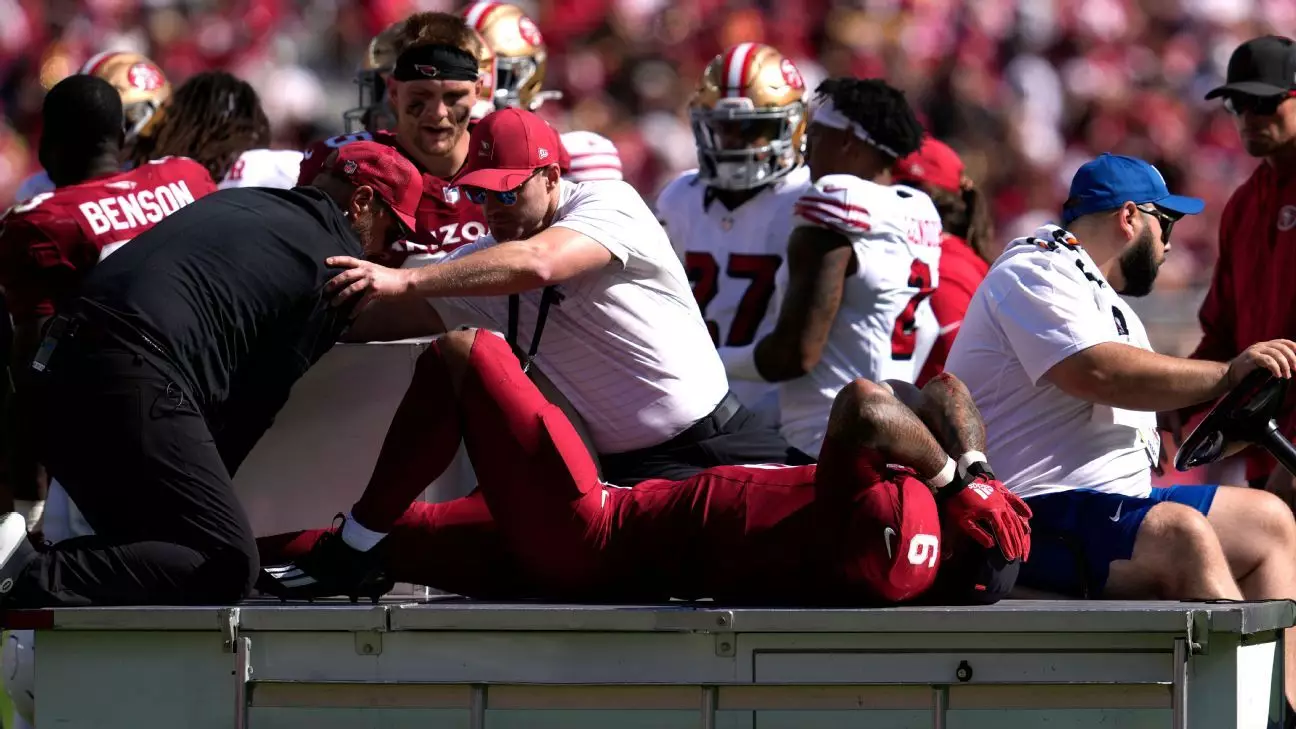Football, often celebrated as the pinnacle of American sports entertainment, masks a deeper, more disturbing truth: its brutal physical toll on players. Every season, countless athletes face severe injuries that threaten not just their careers but their long-term health. When a promising career can be cut short in an instant—as in the case of the Arizona Cardinals’ James Conner—the glamour of the gridiron quickly fades into a stark acknowledgment of the sport’s ruthless nature. Many fans and analysts tend to romanticize the game, focusing on heroics and highlight-reel moments, but the reality inmates a different narrative: one layered with trauma, sacrifice, and sometimes preventable tragedy.
The incident involving Conner’s severe ankle injury exemplifies how unpredictable and dangerous football truly is. His hurt was not just a minor setback but a crushing blow that will impact him for the rest of his life. Despite advances in sports medicine, the physical impact of high-impact collisions persists, suggesting that the price players pay is often hidden beneath the surface—chronic pain, mental health struggles, and fears about future mobility. The human element gets drowned out by stats and scores, but for the athletes themselves, each tackle, each collision, comes with stakes that transcend mere game statistics.
Why Do We Accept This Hidden Suffering?
It’s difficult to confront the uncomfortable reality that the sport we cheer for can be so damaging. In our obsession with entertainment, we have tacitly accepted a system that commodifies athletes’ bodies for fleeting moments of thrill. The fact that Conner’s injury is deemed “severe” and will require surgery indicates the brutality behind the glossy veneer of sports media. Yet, in the aftermath, the focus often shifts to team strategies or player replacements, rather than acknowledging the person behind the helmet and cleats.
The sports industry operates within a paradox: it champions resilience and toughness while internally grappling with the consequences of injury and burnout. For players like Conner, who is only 30, this injury may have a ripple effect—leading to psychological trauma, fear of future deterioration, or a sense of loss. The larger societal acceptance of injuries as an inherent risk of football fosters a dangerous normalcy, making us complicit in ignoring the underlying issues of athlete welfare in pursuit of entertainment.
The Myth of Self-Reliance and Our Collective Obligation
There is a pervasive cultural narrative suggesting that athletes should just ‘push through’ pain and injury, embodying resilience at all costs. This myth disregards the complexities of human health, ignoring the need for adequate medical care, mental health support, and systemic reforms to protect players. The tragic case of Conner’s injury should serve as a wake-up call for a society that often prioritizes spectacle over safety.
Organizations, leagues, and fans collectively bear responsibility. We have the power to demand safer practices, improved medical protocols, and a shift away from glorifying relentless physical endurance at the expense of well-being. A more compassionate approach would value athlete longevity and health above short-term wins and highlight stories of recovery, mental resilience, and systemic change. It’s time to recognize that the true victory in sports is not just in the scoreboard but in safeguarding the humanity of those who make the game possible.
Reframing the Narrative Around Football and Safety
Football’s violent allure has long been part of its identity, but turning a blind eye to the real costs is a disservice to the sport’s integrity. While players like Conner inspire with their determination, their sacrifices should prompt a reassessment of how we perceive and manage sports-related injuries. Player safety must transcend rhetoric; it should become a core value embedded in every decision, from rule changes to medical protocols.
The sport’s brutal reality demands unwavering advocacy for reforms that prioritize human health. As spectators and members of society, our challenge is to shift the narrative from one of reckless heroism to one of responsible sport stewardship. Until we place athlete well-being at the forefront, we continue to endorse a dangerous culture that undervalues physical and mental health in pursuit of fleeting glory. The severity of injuries like Conner’s reminds us that beneath the spectacle lies the fragile, often overlooked human being—something we can no longer afford to ignore.


Leave a Reply